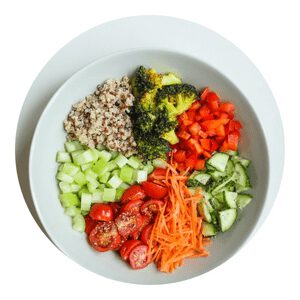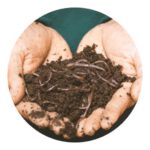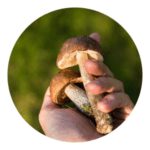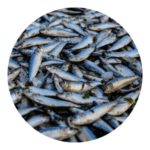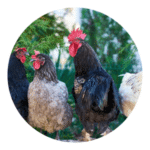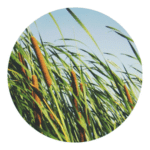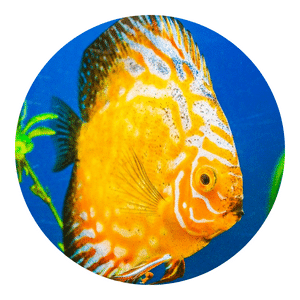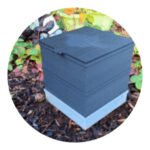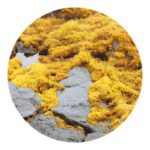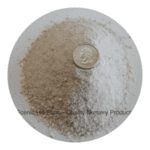How To Build A Compost Pile
If you have a garden, or even just a few plants, chances are you already know the benefits of compost.
Compost is nutrient-rich and helps your plants grow healthy and strong. It can also help reduce your garbage output and save you money on fertilizer.
But what if you don’t know how to make compost?
This guide will show you how to build a simple compost pile in your backyard.
Compost Menu
Why compost?
Composting is an excellent way to reduce waste and create a nutrient-rich soil amendment for your garden.
When done correctly, composting also reduces methane emissions from landfills.
There are many reasons to compost, but these are some of the most important:
Composting reduces the amount of waste that goes into landfills.
This is important because when organic material decomposes in a landfill, it produces methane gas, which is a greenhouse gas that contributes to climate change.
When you add compost to your garden, you are adding nutrients that will help your plants grow.
Compost contains nitrogen, phosphorus, and potassium, which are essential for plant growth.
Composting also improves the structure of your soil. It helps sandy soils retain water and makes clay soils more permeable.
The benefits of composting
Composting is a great way to reduce your environmental impact and save money on fertilizers and other gardening products.
It is also a great way to reduce waste because you can compost food scraps and other organic materials that would otherwise end up in the trash.
There are many ways to compost, but one of the simplest is to build a compost pile. You can do this by layering organic materials, such as leaves, grass clippings, and food scraps, in a bin or heap.
As the materials decompose, they will turn into rich compost that you can use to fertilize your garden or lawn.
Composting is good for the environment because it reduces the amount of waste that goes into landfills.
It also helps improve soil quality and reduces water pollution from runoff.
Building your own compost pile
Composting is a great way to reduce waste and create nutrient-rich soil for your garden.
Building your own compost pile is easy and can be done with just a few simple materials.
To get started, you’ll need some organic matter to compost.
This can be things like vegetable scraps, coffee grounds, eggshells, or even shredded newspaper.
Once you have your organic matter, you’ll need a place to put it. A simple bin made out of wood or wire can work, or you can just build a pile on the ground.
Once you have your bin or pile, it’s time to start adding organic matter.
The key to successful composting is to maintain the right ratio of carbon-rich materials (like leaves) to nitrogen-rich materials (like food scraps).
Location, location, location
A compost pile is a great way to reduce your waste and create nutrient-rich soil for your garden.
But where should you put it?
Here are a few things to consider when choosing a location for your compost pile:
1. Sun or shade? Compost piles need both sun and shade.
The sun helps heat up the pile, which speeds up the decomposition process. But too much sun can make the pile too hot, which can kill off the beneficial bacteria that are doing the work.
Shade helps keep the pile from getting too hot, and also protects it from rain, which can make the pile too wet and soggy.
2. Nearby water source? A compost pile needs water to help break down the organic matter.
Starting my own compost Making my own little space For all my kitchen scraps And leaves from the yard I'm excited to get started Building up my pile Layer by layer I can't wait to see the results Of my homemade compost
Chappy The Gardener
what to compost
A compost pile is a great way to reduce your waste and create nutrient-rich soil for your garden.
Here’s how to build a compost pile in your backyard:
1. Choose a sunny spot in your yard for your compost pile. The sun will help the pile break down more quickly.
2. You can build your compost pile directly on the ground, or you can use a bin or container. If you choose to use a bin, make sure it has holes in the bottom so air can circulate.
3. Begin adding organic materials to your compost pile, such as leaves, grass clippings, and fruit and vegetable scraps. Avoid adding meat or dairy products, as these can attract pests.
4. Add a layer of carbon-rich material, such as straw or wood chips. Then add a layer of nitrogen-rich material, such as grass clippings or fruit and vegetable scraps.
5. Continue building your compost pile in alternating layers of carbon and nitrogen until you reach the desired height.
what not to compost
Although composting is a great way to reduce waste and create nutrient-rich soil for your garden, there are certain things that should not be added to your compost pile.
Meat, bones, and dairy products will attract animals and pests to your compost pile and can create an unpleasant smell.
In addition, these items will take much longer to break down than other organic materials.
You should also avoid adding any diseased plants to your compost pile as you don’t want to risk infecting healthy plants.
If you’re unsure whether or not a plant is diseased, it’s better to err on the side of caution and leave it out.
Finally, avoid adding any materials that have been treated with chemicals, such as pressure-treated wood or charcoal briquettes from a grill.
These chemicals can be harmful to plants and animals.
The layering process
Composting is a process of layering organic materials to create nutrient-rich soil.
Building a compost pile is easy and can be done with items from your kitchen and yard.
To start, find an area in your yard that gets some sun and is away from high traffic areas.
You’ll need a spot that’s at least 3×3 feet, but the bigger the better. Once you have your spot, you can start layering your materials.
The first layer should be made up of brown materials, like dead leaves, twigs, and branches.
The second layer should be green materials, like grass clippings and vegetable scraps. Alternate between brown and green layers until your pile is about 3 feet high.
Once your pile is built, cover it with a tarp or piece of wood to keep the materials moist.
Hot or cold composting?
There are two methods of composting: hot and cold.
Hot composting is the quicker method, taking about two to four weeks. The pile is kept moist and turned frequently, which causes it to heat up and hasten the decomposition process. This method is best used in the summer when temperatures are warm.
Cold composting takes much longer, usually four months to a year, but doesn’t require as much effort. The pile is built and then left alone until it has decomposed on its own. This method can be used year-round, but is slower in colder climates.
Which method you choose depends on your needs and preferences. If you want compost quickly, hot composting is the way to go.
Turning and maintaining your pile
Assuming you have already built your compost pile, there are a few things you need to do to turn and maintain it.
Depending on the size of your pile, you will need to turn it every few days to a week. This can be done with a shovel or pitchfork.
To turn your compost pile, simply lift up one side and dump the contents in the middle. Repeat this process until all the materials have been turned.
Once your compost pile is turned, you will need to add water if it is too dry or remove water if it is too wet. The ideal moisture level for a compost pile is about 40-60%.
If your compost pile is too wet, simply drain off any excess water. If it is too dry, add water until it reaches the desired moisture level.
Troubleshooting your compost pile
If you’re having trouble with your compost pile, there are a few things you can do to troubleshoot the situation.
First, check the moisture levels of your compost. If it’s too dry, add some water. If it’s too wet, add some dry materials like leaves or straw.
Second, check the temperature of your compost. It should be between 140 and 160 degrees Fahrenheit. If it’s too cold, add some green materials like grass clippings or kitchen scraps. If it’s too hot, turn it with a pitchfork to aerate it and cool it down.
Lastly, make sure your compost has the right ratio of carbon to nitrogen. A good ratio is 30:1 carbon to nitrogen. Add more carbon-rich materials if your compost is too smelly or if it’s not breaking down properly.
What will happen if you left the compost too long?
If you leave the compost too long, it will become anaerobic and smelly.
The process of decomposition will slow down and eventually stop. This can happen if the compost pile is too wet or if it doesn’t have enough air.
Compost that has gone anaerobic can be fixed by adding more brown materials to aerate it, turning the pile so that oxygen can reach all parts of it, or by simply waiting for it to dry out a bit.
Why are there no worms in my compost?
Worms are not typically found in compost piles because the conditions in most compost piles are not ideal for worms. The temperature in a compost pile is usually too hot for worms, and the lack of oxygen can also be problematic.
Additionally, the high level of acidity in a compost pile is often off-putting to worms. While there are no worms in most compost piles, this does not mean that the compost pile is not working properly.
Why should you not compost meat?
When it comes to composting, there are a lot of things you can put in your pile.
However, there are also some things that you should avoid putting in your pile, and meat is one of those things.
Here’s why you shouldn’t compost meat:
1. It will attract animals.
If you’re composting meat, chances are that you’re doing it outdoors. This means that the smell of the rotting meat will attract animals like rats, raccoons, and opossums. Not only is this a nuisance, but it can also be dangerous if the animals are carrying diseases.
2. It will create an unpleasant smell.
Even if you don’t have any problems with animals getting into your compost pile, the smell of rotting meat is going to be pretty unpleasant.
Are ants OK in compost?
If you’re wondering whether ants are okay in compost, the answer is yes!
In fact, having a few ants in your compost pile is actually a good sign that your compost is healthy.
Ants help to aerate the compost and break down organic matter.
So, if you see a few ants crawling around your compost pile, don’t worry – they’re actually doing you a favor!
Can you put bread in compost?
Yes, you can put bread in compost! Here are a few things to keep in mind when adding bread to your compost pile:
-Bread is a source of carbohydrates and will help attract beneficial microbes to your compost pile.
-Avoid adding moldy or stale bread as it could introduce harmful fungi or bacteria to your compost.
-Tear or chop the bread into small pieces so it breaks down more easily.
Bread is a great addition to any compost pile because it helps attract beneficial microbes and break down easily. Just be sure to avoid adding moldy or stale bread, and tear or chop the bread into small pieces before adding it to your pile.
In conclusion, starting to build your own compost is a great way to be more sustainable.
Not only does it reduce food waste, but it also enriches the soil and can save you money on fertilizers.
It’s a simple process that anyone can do, and it has many benefits for both the environment and your wallet.
So what are you waiting for? Start composting today!
Organic Fertilizer
Helps Us Grow – Share If You Like





